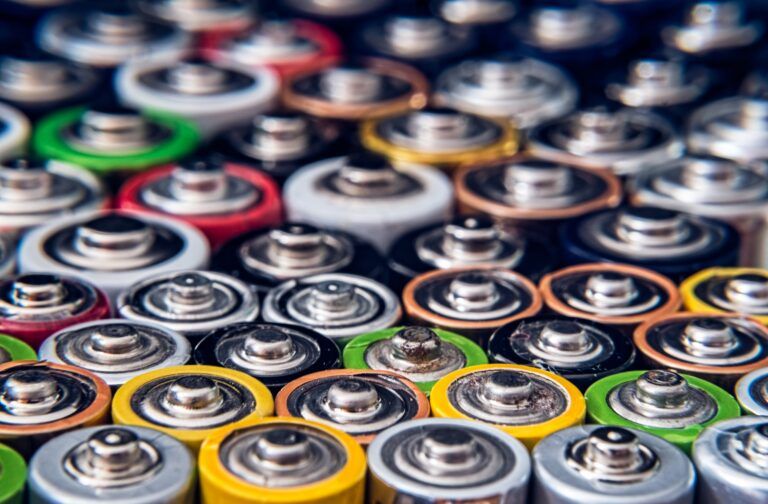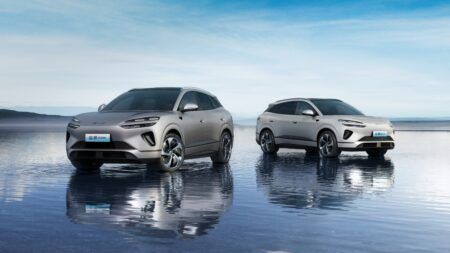In 2022, the battery reaches the grand old age of 221 years. With more car buyers now opting for electric, here we recognize what batteries have done for humankind, and the advantages their technology offers the mobility and energy spaces.
Alessandro Volta introduced the first battery in 1801. It was quite simple in design, his first attempts consisted of rudimentary objects: thin strips of copper, cardboard and zinc, separated by damp leather. Volta’s conducting element was – unbelievably – his own tongue.
Batteries work on the principle of the galvanic cell, in which electrically charged particles flow in a circuit from the negative to the positive pole to generate electricity. The battery is both an electrochemical energy store and a converter: When discharged, stored chemical energy is converted into electrical energy by the electrochemical reaction. This converted energy is then available to consumer devices independently of the power grid.
Far from its original uncomplicated design and limited capacity, the battery is now highly developed. So much more than an indispensable component in smartphones and laptops, life without batteries today seems unimaginable. The breakthrough of a commercially viable lithium-ion battery was, however, relatively recent: in 1979, researchers John B. Goodenough and Koichi Mizushima developed a rechargeable lithium cell with about 4 volts, that used lithium cobalt dioxide as the positive electrode. This was the crux of the lithium-ion battery’s triumph. Its rechargeability made it the basic prerequisite for battery-powered e-mobility, too.
How did the battery end up in cars – and how did electromobility come about?
The emergence of electromobility is strongly associated with the name of the British naturalist Michael Faraday. If you were paying attention in physics lessons, you might remember the “Faraday cage” that protects the occupants of passenger cars from lightning strikes by providing electrical shielding. The year 1821 is considered the birth of electromobility because Faraday was able to show how permanent rotation was created with the help of electromagnetism.
By the end of the 19th century, electric cars were more advanced than cars with internal combustion engines. The very first four-wheeled electric-powered vehicle was introduced in Coburg in 1888 by German entrepreneur and inventor Andreas Flocken.4 This was the catalyst for continuous, rapid development in electromobility. Back then, the share of electrically powered vehicles was almost twice as high as that of vehicles with combustion engines. But due to the interaction of the automotive and oil industries, the automotive trade and users, the media and politics an automotive system was established in which, unfortunately, e-cars were not able to gain momentum. It sounds crazy that all these great discoveries and ideas had to lie waste for almost a century, and that only now e-cars are back in the fast lane due to increasing environmental problems. The figures concur – the EY Mobility Lens Consumer Index shows that more than 40% of current new car buyers plan to invest in an electric car. Ecological awareness and environmental protection are high on the consumer’s agenda.
Today, renewable energies, battery energy storage systems and e-mobility are key to sustainability and an environmentally friendly energy system. Other propulsion options exist, such as hydrogen. However, scientific studies have shown that with hydrogen as a form of propulsion, most of the energy is lost in the technology chain and around 80% of the efficiency is sacrificed. In the case of battery-electric drive, this is a maximum of 30% of the energy used, making this form of drive the most viable alternative engine for the foreseeable future.
The future looks ever greener
The still new concept of bidirectional charging should make e-mobility even more attractive and sustainable in the years to come. If vehicles are connected to a bidirectional charging network while idle, the battery could actively participate in the energy market by joining forces as a “virtual power plant” with other vehicle and home storage batteries, even generating income. If the “state of health” of the battery can then be predicted – with the help of software that can determine the wear and aging process for each type of battery under certain usage conditions – the value chain can be significantly expanded. This is because such information makes a second life cycle of the battery possible.
Let us salute the invention of the battery, which has made so many things possible, including modern e-mobility. The battery is a foundation stone for the energy transition, which – historically speaking – has only just begun. Battery analytics software is now on hand to help us understand this nucleus of a world-changing technology. This is a story that is far from over.






